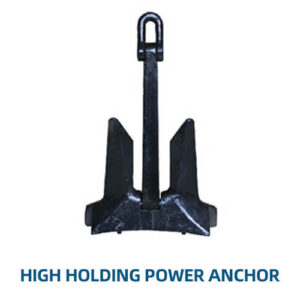Key Features of a Bulwark Ladder:
- Sturdy Construction:
- Material: Typically made from strong, durable materials such as marine-grade aluminum or steel, the bulwark ladder is designed to withstand heavy use and harsh marine environments.
- Non-Slip Steps: The steps are equipped with anti-slip surfaces to ensure secure footing even when wet or when the ship is in motion.
- Design and Functionality:
- Adjustable Height: Some bulwark ladders have adjustable height to accommodate different bulwark heights, ensuring versatility across various ship types.
- Secure Mounting: The ladder is securely mounted to the bulwark using brackets or hooks, providing a stable and safe platform for users to ascend or descend.
- Safety Features:
- Handrails: Handrails are typically provided on either side of the ladder to offer additional support and safety to users.
- Lightweight and Portable: Designed to be easily portable, allowing crew members to quickly deploy or stow the ladder as needed.
- Applications:
- Maintenance and Inspection: Often used during maintenance or inspection tasks, allowing crew members to easily and safely move over the bulwark.
- Cargo Handling: Facilitates safe movement when handling cargo, especially in areas where the bulwark creates a height difference.
- Compliance and Standards:
- Safety Compliance: Built to comply with maritime safety regulations, ensuring that the ladder meets required safety and performance standards.
Other Types of Ladders Used on Ships
1. Pilot Ladder:
- Purpose: A pilot ladder is a specialized rope ladder used to transfer pilots between ships and pilot boats. It’s designed for easy deployment and secure footing in rough sea conditions.
- Design: It consists of flexible wooden or synthetic steps and side ropes, often with spreader steps to prevent twisting.
- Safety: Meets strict international standards, such as those set by SOLAS, ensuring it is safe for pilot transfers.
2. Gangway Ladder:
- Purpose: A gangway ladder, or simply a gangway, is used to allow crew and passengers to board and disembark the ship from the quay.
- Design: Typically an inclined walkway with handrails, made from materials like aluminum, equipped with anti-slip surfaces.
- Adjustability: Often features adjustable length to accommodate varying distances between the ship and the dock.
3. Engine Room Ladder:
- Purpose: Provides access within the engine room, typically between different deck levels in confined spaces.
- Design: Compact and sturdy, usually made from steel with anti-slip rungs to ensure safety in the often oily and slippery environment of the engine room.
- Fixed Installation: These ladders are usually permanently fixed due to the specific layout of the engine room.
4. Vertical Ladder:
- Purpose: Used for vertical access between decks or to reach high areas such as masts, towers, or cranes.
- Design: Typically constructed from metal, with fixed rungs and often fitted with safety cages or fall arrest systems.
- Versatility: Found in various locations on a ship, from access to the bridge deck to accessing cargo holds.
5. Jacob’s Ladder:
- Purpose: A flexible, portable ladder used for emergency boarding or disembarking from the side of a ship.
- Design: Similar to a pilot ladder, but often used in emergency situations. It consists of rope sides and wooden or synthetic rungs.
- Emergency Use: Often stored in a location where it can be quickly deployed in case of an emergency.
6. Escape Ladder:
- Purpose: Installed as a safety feature, escape ladders provide a means of egress from confined spaces or lower decks in case of an emergency.
- Design: Usually a permanently fixed, vertical ladder with non-slip rungs, positioned in strategic locations throughout the ship.
- Quick Access: Designed for rapid access during emergencies, often leading to designated escape routes or life-saving equipment.
Each type of ladder on a ship serves a specific purpose, contributing to the overall safety and efficiency of maritime operations. From the bulwark ladder that helps crew move over the ship’s sides to the specialized pilot and escape ladders, these tools are integral to maintaining safe and effective shipboard practices. The design and construction of each ladder type are tailored to meet the unique challenges of maritime environments, ensuring that they can withstand harsh conditions while providing secure, reliable access and egress points for the crew.






